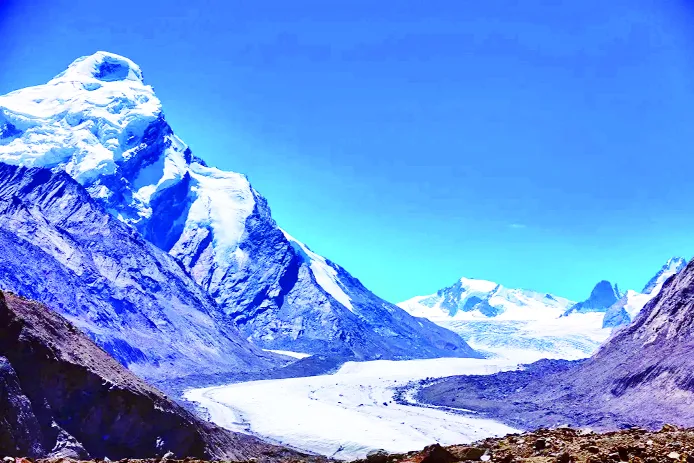The fragile Himalayan regions of Jammu and Kashmir and Ladakh are facing an escalating cycle of climate extremes, with official data showing that the two Union Territories recorded 13 heatwave days in 2025. This comes even as global projections warn of a sharp increase in both heatwave episodes and extreme rainfall events by the end of the decade.
According to details, the Government of India has acknowledged a report titled “Weathering the Storm: Managing Monsoons in a Warming Climate,” which forecasts a 43% rise in the intensity of extreme rainfall events by 2030 and a doubling of heatwave days. For regions already grappling with erratic monsoons, glacial retreat, and fragile ecosystems, the numbers serve as a stark warning.
India Meteorological Department (IMD) data reveals a fluctuating but concerning trend: Jammu & Kashmir and Ladakh experienced 19 heatwave days in 2021, 11 in 2024, and 13 so far in 2025, reflecting a broader vulnerability across the Himalayan belt.
Officials say these episodes are symptomatic of a growing environmental crisis where rising temperatures, glacial melt, and unpredictable rainfall patterns converge to trigger landslides, flash floods, and ecosystem disruption.
While IMD continues to monitor extreme weather using high-resolution satellite imagery and station-level data, experts emphasize the need for district-level monitoring in J&K. Given the region’s terrain, even a single cloudburst or heatwave can devastate local economies and communities.
Amid mounting risks, Jammu & Kashmir has received Rs 13.20 crore since 2018 under the National Mission for Sustaining the Himalayan Ecosystem. The funds spread across 2018-19 to 2023-24 have been earmarked for strengthening climate research, vulnerability mapping, and disaster risk reduction in the ecologically fragile zone.
Ladakh, carved out as a Union Territory in 2019, has separately been sanctioned Rs 5.39 crore under the scheme.
The Department of Science and Technology has also set up State Climate Change Cells in 13 Himalayan states and UTs, including J&K, to assess vulnerabilities at the district level and implement State Action Plans on Climate Change.
Within J&K, these cells are mandated to identify climate hotspots and frame mitigation strategies, especially against floods, landslides, soil erosion, and glacial retreat. The funding also supported a Centre of Excellence on disaster risk reduction at IIT Roorkee, while the Wadia Institute of Himalayan Geology in Dehradun continues to focus on landslides, earthquakes, and glaciology across the Himalayan belts, including J&K.
Officials said that funding support for climate adaptation does not flow state-specifically, and is routed largely through State and National Disaster Response Funds. Yet, scientists said that compound weather events, heatwaves followed by sudden extreme rainfall, are now among the gravest risks to the Himalayan belt.
The Ministry of Environment, Forest and Climate Change has also notified ecotourism guidelines (2021) for protected areas, while the Tourism Ministry has drawn up a National Strategy for Sustainable Tourism to balance rising footfalls in Kashmir with environmental safeguards. In parallel, a National Network Programme on Urban Climate has been launched to study urbanisation pressures and extreme events in Himalayan towns.
With both J&K and Ladakh marked as climate hotspots, the government said that state governments can use up to 10% of SDRF allocations to address “locally relevant disasters”, a provision that could now be triggered for heatwaves and compound climate shocks.






